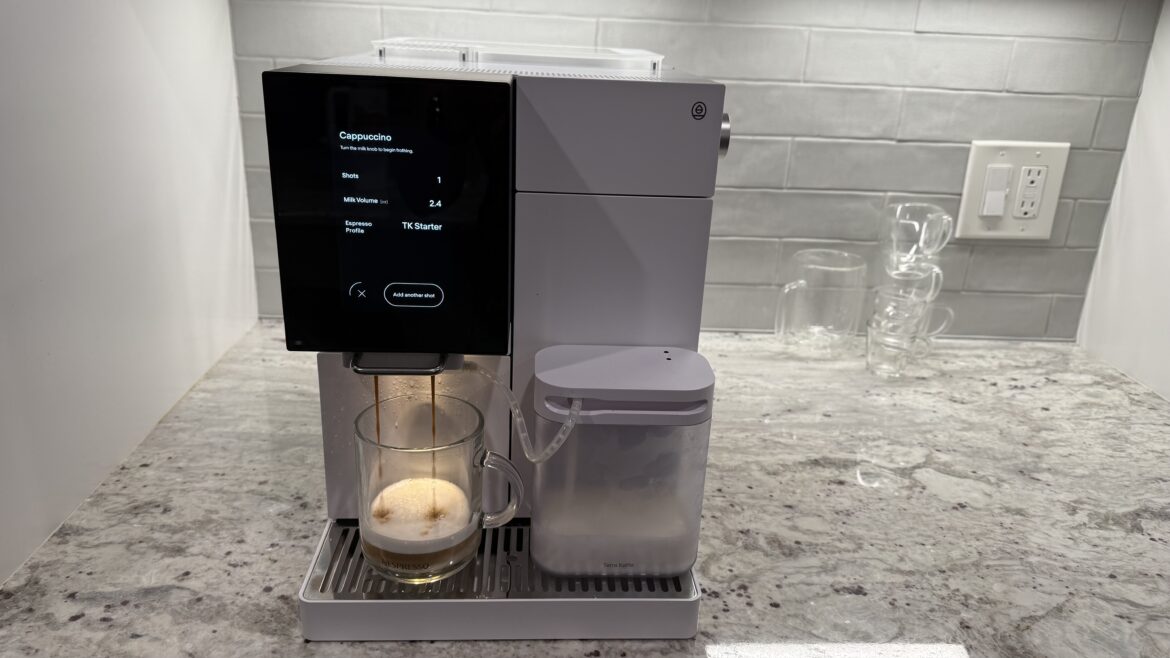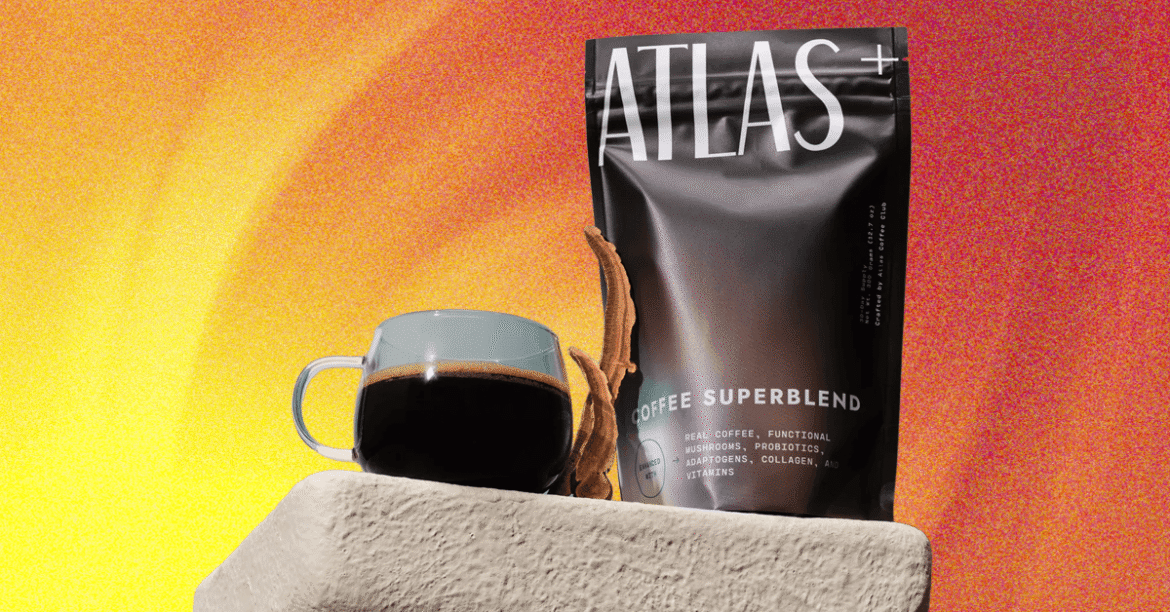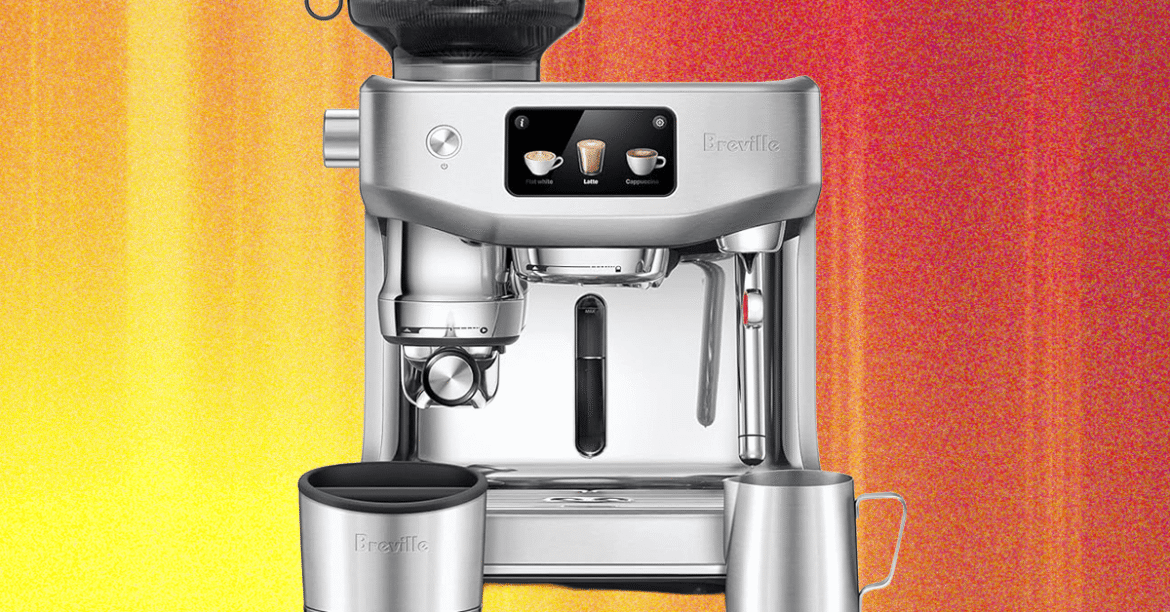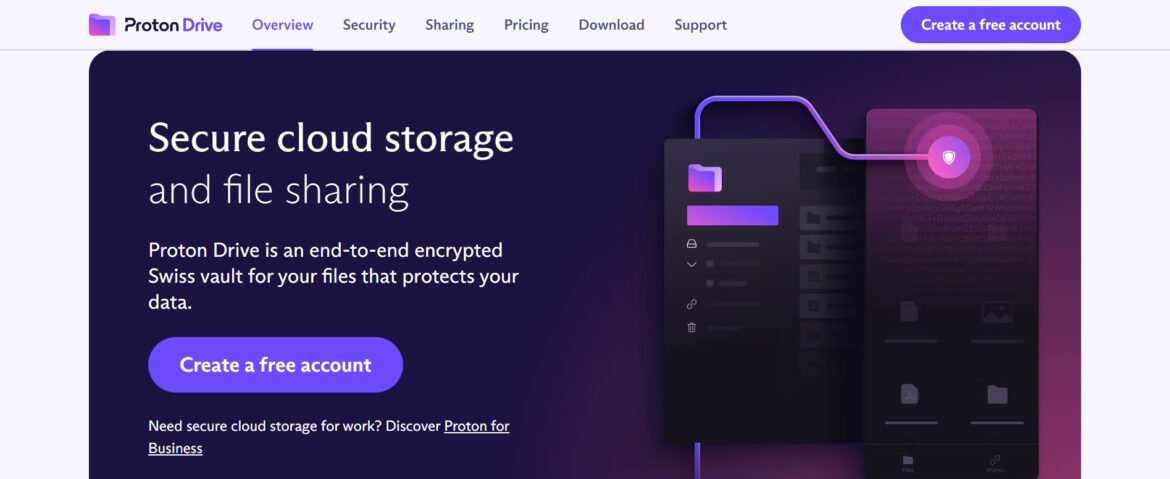Why you can trust TechRadar
We spend hours testing every product or service we review, so you can be sure you’re buying the best. Find out more about how we test.
Terra Kaffe TK-02: two-minute review
Who knew excellent coffee could be so easy? Fill up the water tank and pour your bag of whole coffee beans into the hopper. If you like milk-based drinks, put your milk of choice into the milk carafe and attach it to the machine. The Terra Kaffe TK-02 will craft your favorite drink that rivals your local coffee shop with just a tap.
Choose from a limited menu on the Terra Kaffe TK-02’s screen, or select from a longer list in the app. Create custom beverages to suit your personal taste. You can also teach (Amazon assistant) Alexa to brew your drink of choice on your voice command.
(Image credit: Karen Freeman / Future)
While it’s certainly not perfect, this is the be-all, end-all coffee maker that replaces the two Nespresso machines, drip coffee machine, and coffee grinder I had in my coffee nook. The Terra Kaffe TK-02 is an expensive machine, though one could argue that if this gets you to eliminate your daily coffee shop runs it could pay for itself in a couple of years or less. The footprint is pretty large, though not nearly as big as the four machines it replaces for me. And like any coffee machine, it does require regular cleaning and maintenance, though none of it is difficult.
The bottom line is this: I’ve tested a lot of coffee machines in my personal and professional life, but I have never made better-tasting coffee and espresso drinks more quickly and easily than I have with the Terra Kaffe TK-02.
(Image credit: Karen Freeman / Future)
Terra Kaffe TK-02: price and availability
- Available at Terra Kaffe and several high-end online and brick-and-mortar retailers
- Retails for $1,995 (£1,461 / AU$2,991)
- Terra Kaffe has a rental program
You can purchase the Terra Kaffe TK-02 directly from Terra Kaffe’s website, where it retails for $1,995 (£1,461 / AU$2,991). Currently, there is a $300 discount offer if you pair the machine with a coffee subscription. You can also rent the machine from Terra Kaffe for $119 per month.
Other places you can purchase the machine include high-end retailers like Bloomingdales, Nordstrom, CB2, and Seattle Coffee Gear. The Terra Kaffe TK-02 is available in two colors: black and white.
(Image credit: Karen Freeman / Future)
Terra Kaffe TK-02: specs
Swipe to scroll horizontally
Name
Terra Kaffe TK-02
Type
Automatic
Dimensions (D x W x H)
17.5” (D) x 10.4” (W) x 14.3” (H) / 44.45 cm (D) x 26.42 cm (W) x 36.32 cm (H)
Weight
29.5 lbs / 13.38 kg
Water reservoir capacity
75 fl oz / 2.22 liters
Milk frother
Yes
Bars of pressure
9
Terra Kaffe TK-02: design
- Modern, sleek design
- Everything you need except coffee and cups included
- So easy to use
The Terra Kaffe TK-02 is sleek and modern, basically a giant rectangular cube with a drip tray sticking out the front. It’s not immediately identifiable as a coffee machine, on looks alone. I tested the white model, but it also comes in black. I’d recommend the black version if you don’t have a strong preference, since white shows the coffee spatters. The touchscreen on the top left front of the machine comes awake when you tap it.
(Image credit: Karen Freeman / Future)
The Terra Kaffe TK-02 is pretty big and heavy, at 17.5” (D) x 10.4” (W) x 14.3” (H) / 44.45 cm (D) x 26.42 cm (W) x 36.32 cm (H) and weighing in at 29.5 lbs / 13.38 kg. Still, it easily fits into my coffee nook with plenty of room to spare. And it takes up a lot less room than the four machines I had in there previously. My husband likes to use his own beans, so his coffee grinder and drip machine, plus my two pod machines (both coffee and espresso) were previously filling up that entire nook. The Terra Kaffe TK-02 eliminates the need for all the other machines.
It comes with a milk carafe that hooks up to the Terra Kaffe TK-02 to make lattes and other milk drinks, a wooden spoon for measuring ground coffee, a water filter, cleaning solution, and descaling solution.
(Image credit: Karen Freeman / Future)
There are two coffee compartments on top. The main hopper holds up to 16 ounces (a typical bag) of whole bean coffee. A smaller, secondary compartment is for pre-ground coffee. If you use this option, add just one scoop of ground coffee and select the pre-ground coffee option from the brewing menu. Note that Terra Kaffe does not recommend using oily or flavored coffee beans.
A dial on the right side of the machine adjust the amount of steam you get in your milk. Dial it to the top to just heat your milk, or dial it to the bottom marker to froth.
(Image credit: Karen Freeman / Future)
The water tank sits behind a door on the front of the machine. As with all maintenance, the Terra Kaffe TK-02 will alert you when the water is running low, though the water level is visible even with the door closed.
The touch screen is the brain of the machine, and it will also let you know when the grounds container (which holds nine pucks) or drip tray needs to be emptied, when you need to descale or deep clean the machine, and when you need to refill the coffee hopper.
(Image credit: Karen Freeman / Future)
Terra Kaffe TK-02: performance
- Crafts amazing coffee and espresso drinks
- Steam or froth your milk of choice
- Could not be easier to use
What you really want from a coffee machine is delicious coffee, and the Terra Kaffe TK-02 delivers. You probably also want flexibility to create different kinds of beverages, easy/quick brewing, and easy clean-up. You get all of that with this machine. There are definitely some quirks, but overall, this machine’s performance is excellent.
(Image credit: Karen Freeman / Future)
The Terra Kaffe TK-02 has lots of pre-set coffee and espresso settings, but any of them can be altered to your tastes. You can adjust the grind size, the amount of coffee, the amount of water, and the amount of milk. When making espresso, you can choose between “TK Standard” and “TK Specialty” brew. The TK Specialty tastes slightly stronger to me, so I reached out the company and they confirmed that it is indeed a stronger brew.
You can create your own custom beverages to your exact specifications, so the possibilities are nearly endless. You can only put 10 drinks at a time on the machine’s touchscreen menu, but it’s easy enough to add and remove your favorites in the Terra Kaffe app.
(Image credit: Karen Freeman / Future)
I brewed an iced coffee, which comes out at a slightly lower temperature and is specially designed for drinking over ice. I found it a bit weak, so I just changed the recipe, reducing the amount of water and increasing the amount of coffee. That made it perfect for my tastes. I also created a drink just for my husband, which is basically a standard Americano with an extra two shots of espresso. You can literally create anything and make it an option on your touchscreen menu.
The touchscreen menu is limited to ten drinks, so put your ten favorites there. You can still access plenty more (or create more anytime) easily with the Terra Kaffe app. You can teach your Alexa Amazon Assistant to work your Terra Kaffe TK-02, but I found that connection to be rather inconsistent.
The machine has to be on already; Alexa won’t turn it on. Then you have to ask Alexa to launch the machine, because if you just ask to brew right away, she won’t get it. Even then, sometimes she doesn’t do what you ask. And she keeps asking you questions when you’re done brewing, which is kind of annoying. Frankly, I found myself not really using Alexa much; both the touchscreen and the app are so easy to use. I open the app and wake the machine while I’m still in bed; by the time I get downstairs, the Terra Kaffe TK-02 is ready to brew.
(Image credit: Karen Freeman / Future)
Though I’m not really a milky coffee drinker, I did test out a number of milk-based drinks such as latte, cappuccino, macchiato, and flat white. They were all quite good, the milk frother heats and froths the milk as you’d expect. How much foam you get can also depend on the sort of milk you use. I used 2% dairy milk.
(Image credit: Karen Freeman /Future)
The Terra Kaffe TK-02 automatically grinds your beans to the correct size for the type of coffee you’re brewing. For drip coffee, the beans will be ground on the coarser side. For espresso, you’ll get a finer grind. Both of those can be adjusted to your preferences. Like all the best espresso machines, the Terra Kaffe TK-02 brews espresso at 9 bars of pressure.
If you prefer to use pre-ground beans, you put them in a separate designated hopper and select the pre-ground beans option before brewing. This is helpful for the occasional cup of decaf or using gifted grounds, but otherwise I’d stick to fresh whole beans.
(Image credit: Karen Freeman / Future)
Cleaning is pretty simple, but the machine does require regular attention. The Terra Kaffe TK-02 self-rinses frequently. I got in the habit of keeping a cup under the spout when not in use to catch the majority of rinse cycles. You can expect the machine to rinse out a few ounces of water when warming up, and again when shutting down. It also just rinses itself at random times.
We drink four cups a day on average, and even with the cup under the spout, I still have to empty the drip tray roughly daily. This is because water comes out directly into the drip tray sometimes too. If you froth milk, you’ll need to run a rinse of the milk system right after. As you might expect, the water tank needs to be refilled pretty frequently as well.
Cleaning up the grounds couldn’t be easier. All of the grounds end up as pucks in the grounds bin, you just have to pull it out and dump it roughly every nine brew sessions.
At some point, I’ll need to do a deep clean and a descale. But in several weeks of use, it has not come up yet. You do not have to guess when to do any of this maintenance, as the machine will let you know when to do it and offer guidance if you’re not sure how to go about it.
(Image credit: Karen Freeman / Future)
Should you buy the Terra Kaffe TK-02?
Swipe to scroll horizontallyTerra Kaffe TK-02 score card
Attribute
Notes
Score
Value
It’s expensive, but is it cheaper than your daily coffee shop runs?
4/5
Design
It’s cleverly designed and looks sleek on your countertop.
4.5/5
Performance
There’s no learning curve. Brewing amazing coffee and espresso drinks is so easy.
5/5
Buy it if
Don’t buy it if
Terra Kaffe TK-02: also consider
How I tested the Terra Kaffe TK-02
Over the course of two weeks, I brewed multiple variations of coffee, espresso, iced coffee, and Americanos. I also made espresso-based milk drinks such as latte, cappuccino, macchiato, and flat white using cold 2% dairy milk. I performed maintenance on the Terra Kaffe TK-02 as directed by the machine: emptying the drip tray, refilling the water, emptying the coffee grounds, and adding new coffee beans.
First reviewed September 2025





